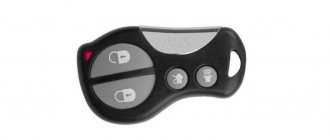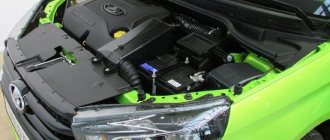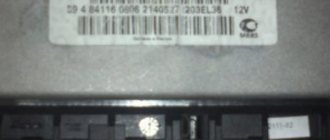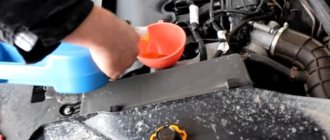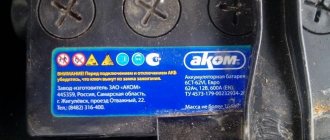Lada Vesta is a car with the ability to do software chip tuning. Both gas equipment and turbocharging elements easily fit into the engine compartment of the Lada; this is another modernization. The model appeared recently, and there are already firmware options for the Lada Vesta. Chip tuning is an intervention in the electronic control unit of the car, reflashing the program, changing the specified factory characteristics, because sedan owners are often not satisfied with them.
Correct chip tuning is rebuilding the internal combustion engine of the Lada Vesta to new parameters, and not banal ECU firmware. To advance the ignition angle, you need to install the appropriate camshaft. To work with greater power, a reinforced cylinder-piston group is required. If we are dealing with an increase in horsepower, then we need a massive and fast air supply - we cannot do without improving the intake and exhaust systems.
- Why is chip tuning possible for Lada Vesta?
- ECU firmware process
- What do chip tuners promise?
- Increasing engine power characteristics
- Optimizing motor performance
- Reduced fuel consumption
- Vesta gas pedal sharpness
- Disadvantages of Vesta chip tuning
- Is Vesta's engine life decreasing?
- You may lose your factory warranty
- Famous firmware
- Firmware improvements by AvtoVAZ
Why is chip tuning possible for Lada Vesta?
Vesta is available in two versions: with a 1.6 (106 horsepower) and 1.8 (122 horsepower) engine. Both power units are quite powerful, their preset factory torque parameters are “averaged,” and chip tuning optimizes engine performance. VAZ makes engines with a small volume, because people do not want to pay a large transport tax. People want an "average", practical car. Squeezing maximum power from the engine is not the prerogative of AvtoVAZ. There are Euro 5 environmental standards that are not compatible with chip tuning. From the factory, the torque is adjusted so that the car drives from the bottom; this is necessary for urban driving. Chip tuning can spread the torque over the entire operating range of the engine.
What needs to be done with the Lada Vesta 1.6 to make it drive?
Lada Vesta with 21129 engine is the most reliable option. A car with this engine does not require oil, and the consumption is not bad at all. Only the driving dynamics leave much to be desired. One hundred and six horses under the hood and 148 Nm of torque pushing a ton of two hundred plus weight is not very convincing. For many, of course, this is quite enough, because Vesta is not a racing car, but a family sedan. But many would like it to be faster. In fact, there is already a very well-proven engine tuning that reveals its full atmospheric potential, without harming its resource one bit.
What do chip tuners promise?
For a regular Lada naturally aspirated gasoline engine, you should not expect a large increase in power - no more than 10%. A car with a turbocharged engine will have a noticeable increase in horsepower. The operation of the power unit will feel elastic, and the gas pedal will become more receptive to driver signals. With an increase in ignition timing, fuel consumption will decrease.
Increasing engine power characteristics
This is the main direction of tuning the heart of the Lada. It is impossible to increase torque without interfering with the motor design. Or it’s possible to add traction in the low and middle speed range, move, or completely remove the cutoff in the upper range. Chip tuning eliminates failures when turning on the air conditioner, the car accelerates more easily and “thinks” less. Everything about the place feels like an increase in engine power. In fact, it is small, approximately 5% (on expensive and competent firmware - up to 10%). The price for tuning ranges from 2500 rubles to 80 thousand. For this money you will get a complete upgrade of your car. Tuning the Lada Vesta engine depends on the program being filled in and the level of the technician.
Optimizing motor performance
With the factory settings, Vesta is prone to slow acceleration, a “stiff” ride, and one gets the feeling that the car is having a hard time driving. It does not immediately respond to a greater opening of the throttle with the gas pedal; people say: “the gas is dull.” This becomes noticeable after proper chip tuning. Well-written firmware eliminates dips during acceleration, makes the pedal more sensitive, and eliminates jerking during sudden changes in speed. The operation of the internal combustion engine becomes flexible, Vesta drives noticeably easier.
Reduced fuel consumption
The calibration of Vesta engine operating parameters provides for changing the ignition timing to a larger one. An increased ignition timing significantly reduces the consumption of gasoline or other fuel. With the new OZ, less combustible substance is required, however, it burns (oxidizes) longer. This releases more harmful nitrogen and oxygen compounds (oxides) into the atmosphere, resulting from the combustion or explosion of fuel. This does not meet the environmental standards of our country and even more so of the EU countries.
Vesta gas pedal sharpness
Lada owners are unhappy with the responsiveness of the accelerator pedal. By installing chip tuning on a car, the problem is solved. The fact that the electronic gas pedal slows down is not a reason for chip tuning. In principle, the electronic pedal cannot help but brake. That's why it's electronic. The ECU decides whether to go faster or not. By pressing the pedal, a signal is sent to the controller; it has a preset program. He cannot leave the program and opens the throttle valve completely when the engine reaches the required speed. In the case of a mechanical pedal, the valve opens when pressed whenever you want it. To make the gas pedal responsive, an electronic corrector is installed in front of the ECU. The corrector is a “fake” - it gives a signal that the pedal is pressed harder than it actually is, providing the necessary connection between the driver and the accelerator.
Common engine problems
The set of characteristic problems for 21129 has remained unchanged since the days of 21126 from the Lada Priora, of which it is a descendant. Engine tripping may occur: the reason often lies in clogged injectors, faulty ignition coils or spark plugs. Sometimes there are situations with valve burnout.
Another common problem with most 16-valve VAZ units is floating speed. Possible causes of manifestation:
- breakdown of the mass air flow sensor;
- throttle valve contamination;
- failure of the damper position sensor;
- Broken idle speed controller.
Another malfunction is that the engine may not reach operating temperature. The reason often lies in problems with the thermostat, or simply low temperature outside (then the engine needs insulation).
The engine refuses to start: you should check the electrics - coils, battery, spark plugs. The fuel pump or gasoline pressure regulator may fail, or the fuel filter may become clogged.
Knocking and extraneous noises from the engine compartment: hydraulic compensators are worn out, pistons, main and connecting rod bearings may also need to be replaced.
Engine vibration: the idle speed control or the armored wire is faulty; another probable cause is dirty injectors.
Disadvantages of Vesta chip tuning
The Lada Vesta model is young and talk about chip tuning is just starting, however, debates about the pros and cons are already heated. There are plenty of supporters, as well as opponents. Reviews about chip tuning of Lada Vesta are mostly positive. Mostly those who don’t do it speak badly about modernization for a number of reasons. And the reasons are:
Engine life is reduced. Chip tuners also talk about this, although not all of them. The increase in torque affects the transmission elements - the gearbox. The robotic version of Vesta is especially vulnerable. To synchronize the operation of the engine and gearbox, it is recommended to upload a new program to the robot. This is a minus of chip tuning. Warranty service is void. In rare cases, it is possible to hide the fact that a car has been chipped. Cunning car owners, before going to an official dealer, return the original characteristics to the ECU, or have two of them - with old settings and with new ones. There is a big risk of uploading a low-quality program.
Disadvantages of modernization
There are some unpleasant aspects of such work.
- There is an assumption that a chipped internal combustion engine will wear out faster. Some upgrade masters deny resource reductions, others honestly talk about minor losses (about 5%). This, albeit minor, minus may discourage owners from tuning their car.
Important!
The torque upgrade will also affect the transmission, which will have to be adjusted. All this makes the process quite complicated.
- When taking your car for tuning, you can lose the warranty if, when the engine breaks down, it is discovered that it has been upgraded.
- There is some risk of running into unbalanced and low-quality firmware when contacting an unscrupulous technician.
You may lose your factory warranty
If you run into an unqualified Lada chip tuning specialist. The program may install with errors. Sometimes programmers change only one characteristic, for example, fuel delivery. A constantly enriched air-fuel mixture breaks down the catalyst. Excessive thrust significantly reduces the resource of the Lada CPG. And so on.
Unqualified specialists write a program without making changes to the operation of the motor; it remains unchanged. It's not nice to pay for zero results.
Do you want to go to the Kulibins' garages? We strongly do not recommend doing this.
Malfunctions
When the timing belt breaks, the engine, like its brothers in the line, bends the valve.
Important: according to the regulations, the belt is replaced every 120 thousand km, but it is advisable to do this more often, based on the condition of the pump and idler pulley. It is also known that the first samples showed increased engine oil consumption, but this problem was later corrected. Other malfunctions are typical for 16-valve engines from VAZ and have already been discussed above - problems with the thermostat, tripping, noise and knocking in the engine.
Famous firmware
What firmware for Vesta optimizes engine performance? Well, first of all, the author is known. Such programs have a guarantee; in case of problems with the engine (and they are rare), you contact the manufacturer. Such firmware is tested on cars and engines displayed on stands. The author makes the product competently, otherwise he would not have announced the name. Secondly, the firmware must be developed for the car. Universal for all cars, or does not fit with a similar model. This should be chip tuning for Lada Vesta.
A good program gives a big increase in engine power. Its price differs from “no name” chip tunings. We will offer several options for proven firmware.
When it comes to tuning Vesta, the first thing that comes to mind is Paulus. Chip tuning with this firmware reduces acceleration time and reduces fuel consumption. The changes are aimed at increasing traction in the middle engine speed ranges, changing the ignition timing, fuel supply and others. The advantage of Paulus chip tuning is the ability to disable the lambda probe control sensor. It is important if you are planning to remove the catalyst (to create more power, or simply because it is clogged and a new one costs money). Some owners notice poor detonation and have to increase the octane number of the fuel being poured. After all, the ignition timing has changed, but the air intake system remains the same.
Chip tuning from Ledokol changes the idle speed, the maximum throttle opening value, changes the throttle angle (there is a lot of controversy on this issue, some claim that the angle becomes smaller than the standard one) and fuel supply. The increase in acceleration with the firmware is small; in first gear you can reach 7000 rpm or higher.
Chip tuning from Adakt is good for robotic gearboxes. There is better controllability of the Lada robot in manual mode, smooth and quick switching of speeds. The sensitivity of the accelerator pedal improves, the gaps between second and first speeds disappear, and power increases along with acceleration. Reviews about the reduction in fuel consumption are different. For some it decreases greatly, for others it increases. It has to do with the driving style of the car driver.
The RSW firmware for the Lada Vesta focuses on the car's handling. Gas pedal response and acceleration are noticeably improved. In addition to changing the usual characteristics (as with similar firmware), the stabilization system is weakened, which makes it possible to drive off with a slip. Among amateurs and professionals of chip tuning, there is an opinion that, in fact, the calibration angles remain the same, only the throttle opening phase has been changed.
Reduced fuel consumption
We often hear from service station technicians that an upgrade helps reduce fuel consumption. This is not entirely true.
Each car owner must choose: a significant increase in power or a decrease in fuel consumption. It is impossible to keep up with “two birds with one stone” at the same time.
Inexperienced service specialists insist on the opposite. Inexperienced drivers willingly believe what is said.
Reducing consumption
Firmware improvements by AvtoVAZ
There are no factory versions of software for the Lada Vesta with increased power characteristics. But AvtoVAZ plans to improve it, although only in relation to the AMT Lada.
Testing of the new firmware is already underway on cars with an automated transmission (robot). Perhaps she will appear soon. This is the “creeping mode” firmware. The point is that when you release the gas pedal, the car starts moving at idle speed, like an automatic machine.
There is no final opinion on the benefits and necessity of chip tuning of the Lada Vesta. It is up to the owner of the car to decide whether it is worth installing new software on the car or not. In this article you read how to do it correctly so that there is less disappointment about it.
Problems VAZ 21129
1) Overheating. The problem lies in the thermostat that is failing. In winter, another problem may occur: the engine takes a long time to warm up.
2) When the timing belt breaks, the pistons bend the valves. It is necessary to regularly monitor the condition of the timing belt to avoid breakage.
3) Triple. The injectors are clogged or the spark plugs or ignition coils are faulty.
4) Knocks. Knocks in the engine come from hydraulic compensators.
Tuning
You can read about how to increase power here. If you want to increase the power a little, then you can do chip tuning and install a 4-2-1 exhaust system on a 51 mm pipe.
External styling spoiler, bumper and door sills
Tuning Vesta, in our opinion, begins with visual changes. It is more pleasant to see and feel the changes first than to feel them while actually driving the car. Fortunately, the body kit of the domestic Lada Vesta costs adequate money. We would start refining the interior with yarplast, we are tired of the constantly dirty coating, but here we just wipe it with a rag - it shines. Rear tuning for the Lada Vesta bumper involves installing Xmug, there is the same bumper in front, together they look harmonious. Recently, sedans from VAZ have begun to please with their appearance - Vesta is direct proof. It’s far from ideal, it requires a lot of work on styling and on the engine, but it’s a level higher than what it was before. The appearance of the body is acceptable, I just want to see a trim, sporty look. It will suit the average user, but there is no tuner. We think it is necessary to change the front bumper. It’s too boring and there’s also a rook in the middle.
Installation of microchips - boosting the power unit
Many drivers have heard about auto-tuning the Vesta engine, tried to do it themselves, or saw it on the Internet. It allows you to squeeze the most power out of the Vesta engine, and, accordingly, the speed of the car. Firmware control unit makes the car more dynamic, reduces acceleration time, changes the engine response to pressing the gas pedal.
The Vesta procedure is quick: it takes less than 20 minutes.
- First of all, the master connects the computer to the input of the control unit under the hood.
- The computer removes the factory program.
- Next, a new modified program is installed in the control unit.
Before the onset of winter, winter afterburning of engines has become especially relevant. Yes, there are such types of auto tuning. For this purpose, special firmware is created to boost the engine in winter.
A quick and cheap increase in power attracts many car owners. But this can be allowed if the elements are replaced:
- Piston group.
- Camshafts.
- Intake system.
- ECU flashing.
If everything were so simple, then at the factory, when producing cars, the power would immediately be increased. But ecology and its standards come into play. Therefore, to bring the level of harmful emissions into line, it is necessary to reduce the power of power units.
Chip tuning of a Vesta car is the reason for losing the warranty, do it after the warranty period.
Music
Acoustics
Next we move on to the main topic. New acoustics were installed in the front and rear doors:
- Front doors – Hertz ESK 165.5L – component 2-way with connection via a standard crossover – price 8820 rubles;
- Rear doors – Hertz ESX 165.5 – coaxial – 5350 rubles.
- Trunk - 10-inch Audio System R10 subwoofer, covered with mesh - cost 6,400 rubles.
The speakers were installed in specially made podiums.
The subwoofer speaker is on the left side, while the amplifier is mounted on the right side.
Radio tape recorder
As for the radio, for tuning the Lada Vesta SW Cross, the LOUD SOUND studio chose the Pioneer 5000 head unit.
This complex is equipped with a new generation monitor with improved color reproduction. There is also an upgraded signal processor (sound processor). This ensures that you have the widest range of options for customizing your sound, from time delays to crossovers. Naturally, the head unit supports almost all formats, it is easy to change themes, etc. A rear view camera is also connected to the system, the image from which is shown on the monitor.
Among the problems, it is necessary to note the lack of adapters, in particular, for the rear view camera, which is why the trajectory marks do not work (they are simply static and do not respond to steering wheel turns). In addition, for the same reason, it was not possible to connect the radio to the multifunction steering wheel - the volume keys and the speakerphone.
